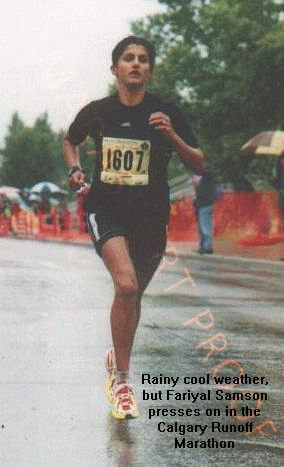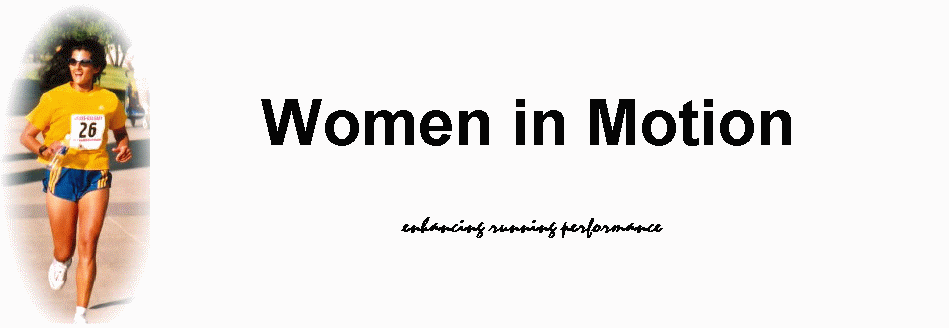
      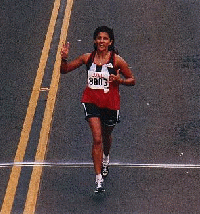 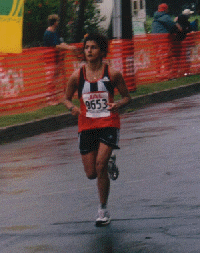 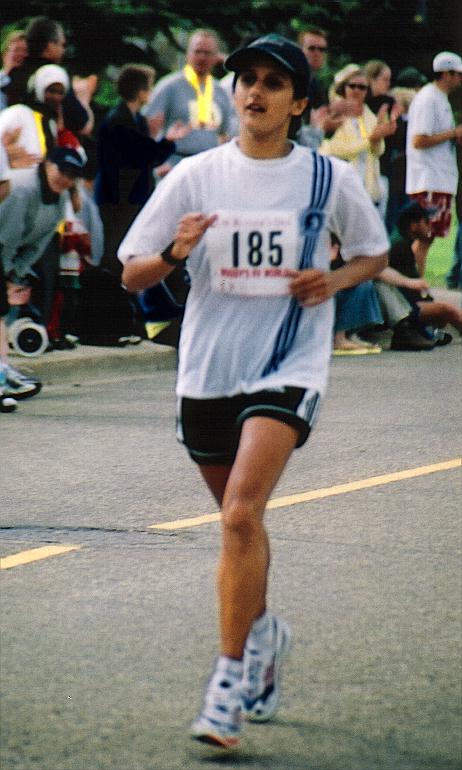 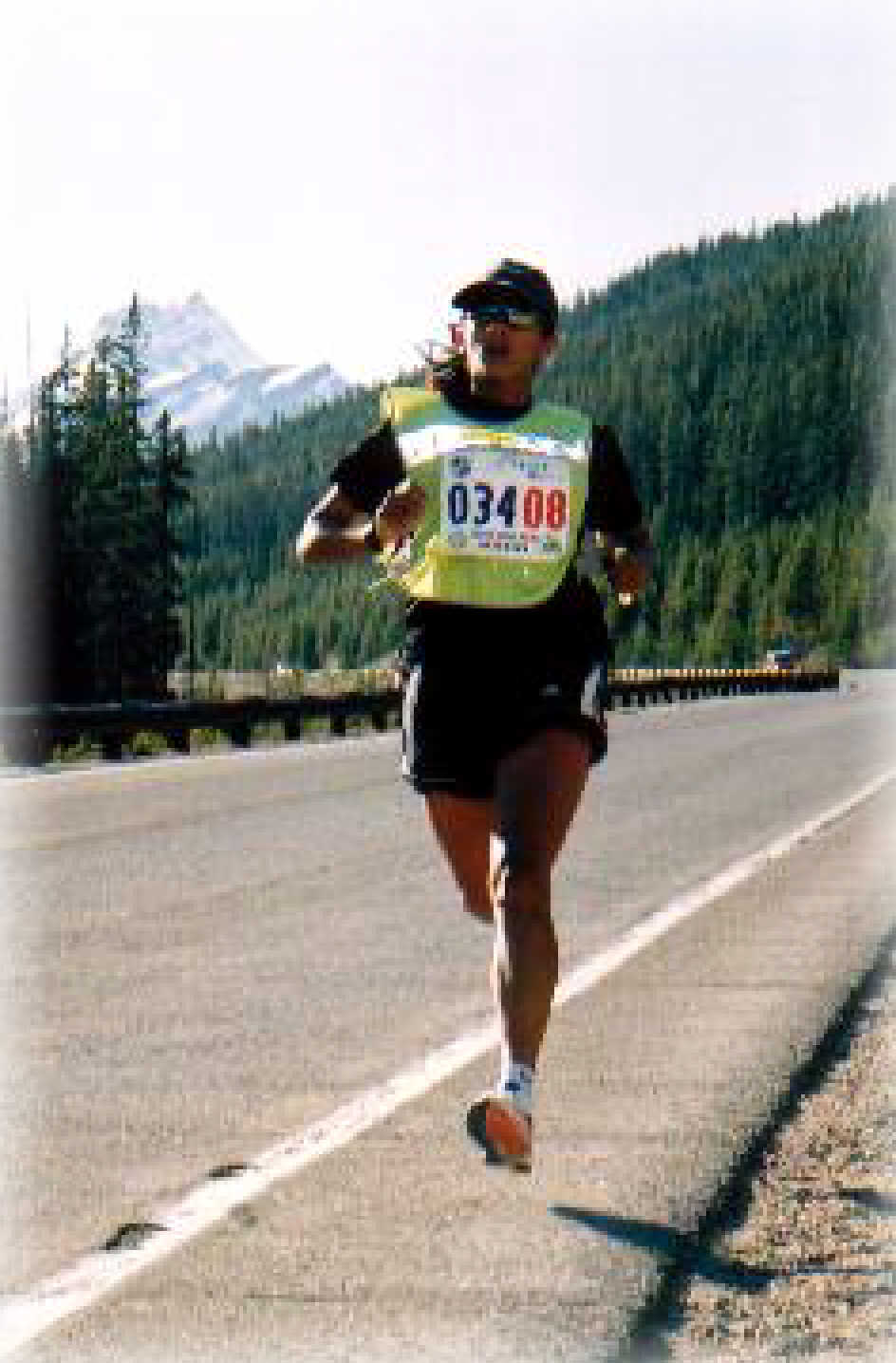  
Running Form
For some runners, it's hard to describe what is a good running form, but runners know
it when they see it.
Good form is more efficient and integral to injury prevention.
Running and walking can be compared in that in walking there is a time when both feet
are on the ground. In running, there is a time when both feet are off the ground.
What are Components of Good Form?
Your form is largely dictated by your biomechanics: how your feet hit the ground. If
you swing one arm wildly, it may be for natural reasons to balance what your legs are
doing. Nevertheless, some basic statements can be made about "good" running form.
The following are sugestions as what to concentrate on, in order to improve running form:
1. BODY:
Run upright. Your back should be straight, roughly at a 90-degree angle to the ground.
Ignore anybody who tells you to "lean into it," even when running uphill. Your torso
should be erect, with your pelvis tucked in (neutral position). Think running tall. Hip
flexibility directly affects your stride length. If the major muscle groups at the hip lack
flexibility, the result is a short, choppy, inefficient stride.
2. HEAD:
Look straight ahead. Unless you are enjoying the scenery, your eyes should be focused
straight down the road on a point moving about 10 meters in front of you. Try to run in a
straight line.
3. ARMS:
Swing your arms naturally. The angle at the elbow between your upper and lower arms
should be about 90 degrees. Your hands should be loosely cupped, about belly level.
Your natural arm swing starts at the shoulder joint. For walkers, the arm tends to stay
fairly straight at the elbow, and the wrists are relaxed. For runners, the arms tend to be
bent at the elbow with the hands cupped. Let your arms swing in rhythm with your legs.
The legs should control armswing, not the other way around.
Focus on keeping the shoulders square and driving the arms backward only. This will
create a rebound effect and send the arms forward.
4. FOOTPLANT:
The most natural landing is mid-foot, the ball of the foot landing first, the heel contacting
the ground a fraction of a second later. The toes push off a fraction after that. Some
runners land further forward, or backward, than others, based on what feels natural to
them. Attempt to modify this natural gait at your own risk. The feet should be pointed
straight ahead, parallel to one another. Foot placement should be directly underneath
your hip.
Your first steps may be awkward. After you have been running for a while, your
running form will begin to improve somewhat as you condition your body. A good coach
may be able to suggest some form improvements, but most runners adapt the form best
suited for them without much prompting.
© Women in Motion -September 1.2000
See Article on Biomechanics for additional information.
| 